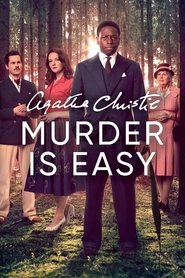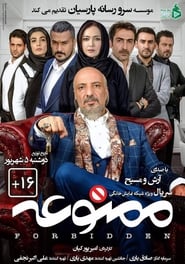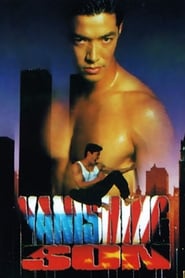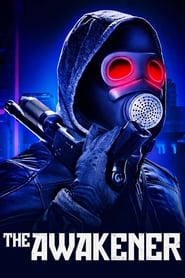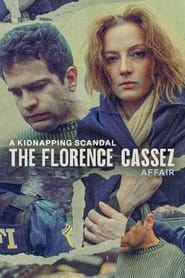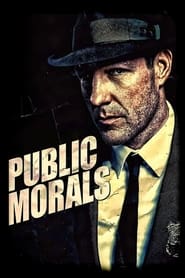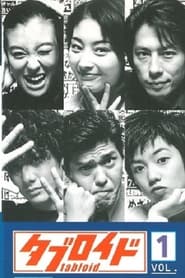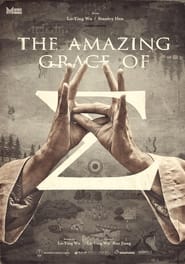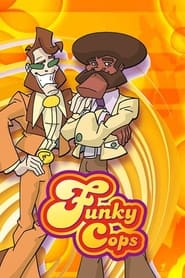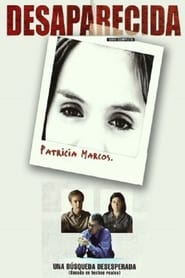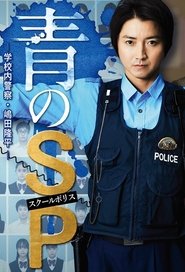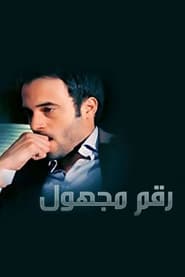Best Crime TV Series - Page 193
-
Murder Is Easy
2023
star 6.2England, 1954. On a train to London, Fitzwilliam meets Miss Pinkerton, who tells him that a killer is on the loose in the sleepy English village of Wychwood under Ashe. The villagers believe the deaths are accidents, but Miss Pinkerton knows otherwise — and when she’s later found dead on her way to Scotland Yard, Fitzwilliam feels he must find the killer before they can strike again. -
Forbidden
2018
Forbidden
2018
"Forbidden" narrates the story of three generations simultaneously and continuously, from the concerns of youth today to the damage to family and social issues. -
Armed Reaction 2021
2021
star 10Inspector Tai On-na (Jessica Hester Hsuan) has always been comfortable in the logistic position of file management. Because of fate, he will work with the Yuanzu-level Tuoqiang senior sister Chan Sam-yuan (Joyce Tang) and the male god of the Flying Tigers team Mung Hon-sam (Moses Chan) to solve the case. (Hui Shiu Hung) arranges to join the unsettled case team, and a group of police officers with their own "characteristics", under the leadership of Hon-sam, pursue unsettled cases that are not of concern to the outside world. Hon-sam was dissatisfied with On-na and fought each other until it was revealed that Anna was afraid of using a gun because of being hijacked, and the two sparked love! On-na meets again with Lau Tat-Wah (Him Law), a tuition student who was destroyed many years ago, but he has joined the underworld... Under the impetus of feelings and guilt, can On-na get back the pistol and re-energize her, and become a new generation of "armed lady cop" ? -
Vanishing Son
1994
star 6Vanishing Son is a short-lived syndicated action television series that was part of Universal Television's Action Pack. Starting as a series of four made for television movies in 1994, the series debuted on January 16, 1995. Vanishing Son I, Vanishing Son II, Vanishing Son III, and Vanishing Son IV, were aired on February 28, July 18, July 25, and October 10, 1994, respectively. The series was ground-breaking for the casting of an Asian male in an attractive leading-man role. -
The Awakener: The Series
2019
star 8.3A masked vigilante appears to attack the impunity that allows politicians and contractors to enrich themselves at the expense of the misery and work of the Brazilian population. The story of the man behind the Awakener's guise involves a personal journey of revenge in which a traumatized agent decides to take the law into his own hands. -
A Kidnapping Scandal: The Florence Cassez Affair
2022
star 7.2A Kidnapping Scandal: The Florence Cassez Affair examines the case of Florence Cassez and Israel Vallarta, alleged kidnappers and one of the most notable and scandalous cases in Mexico’s history. Through interviews and analysis of public records, the documentary details the irregularities of this case and throws light on the people at the center of what became a diplomatic scandal between Mexico and France. -
Screw
2022
star 6.5Rob Williams' darkly comic crime drama portrays prison as you've never seen it before: through the embattled and inspiring characters who work there. -
The Brigade
2023
star 6.9Saïd leads a team of young elite cops and will have to find his place within his group while preventing a gang war from breaking out between Eric's family and that of the El Hassani brothers. -
Public Morals
2015
star 6.8Set in the early 1960's in New York City's Public Morals Division, where cops walk the line between morality and criminality as the temptations that come from dealing with all kinds of vice can get the better of them. -
Policie Hvar
2024
star 4Croatia. A holiday destination for hundreds of thousands of Czech and Slovak tourists, who come here for the sea, mountains, monuments, entertainment, and relaxation. Because even in a holiday paradise, sometimes things go wrong. And sometimes there's murder... The story of the series takes place on the island of Hvar, where a central pair of Czech-Slovak detectives helps to solve crimes involving Czech and Slovak tourists. Michal and Ivana are like fire and water. While he is a funny, sarcastic detective from the "old school," she is a free-spirited, temperamental woman. Together, they must restore the disrupted harmony of the sunny island. The mixed local police force gets to investigate even the most serious crimes. The rule is clear. A Czech body, a Czech chief investigator. And vice versa. -
The Human Vapor
0000
The Human Vapor
0000
-
Tabloid
1998
Tabloid
1998
Tokiwa plays a sharp tongued reporter for a major daily newspaper. She was demoted to a sleazy tabloid as a punishment for breaking the reporter's code of conduct. While working in the tabloid, she discovered that she has the freedom of uncovering the truth behind a murder case. -
The Forest of Love: Deep Cut
2020
star 6.9Nothing's as it seems when a charismatic conman and an aspiring film crew delve into the lives of two emotionally scarred women. -
The Amazing Grace of Σ
2022
star 6.3Muqi, a young pop star becomes more and more arrogant, especially with his manager Nagatsuki, a long-time friend who suddenly commits suicide. Muqi finds himself crushed by sadness and guilt. At the funeral, he meets Master Bensheng, guru of a cult his friend belonged to. If at first, he finds comfort within his place, cracks may soon appear in the caring appearances of the cult members. -
Funky Cops
2002
star 7.2Ace Anderson and Dick Kowalski are two semi-competent cops in San Francisco during the late 1970s. They show more attention towards appearing cool and disco dancing, but finish the cases by the end of the day. They are assisted by their disgruntled police chief Captain Dobbs, plucky reporter Miss Lee, and fellow disco lover Boogaloo. -
Thirteen Years of Dust
2023
star 7.8The special homicide case that was unsolved in 1997 resurfaced 13 years later. Criminal policeman Wei Zhengrong, who wasn't able to find out the real murderer that year was traumatised and left the front line. The once fledgling new policeman Lu Xingzhi grown from his innocence and has become a meticulous criminal investigation expert. The many coincidences of the case brought the master and apprentice together again to hunt down the real culprit. -
Crime Scene: The Times Square Killer
2021
star 6.8In 1970s NYC, the “Torso Killer” preys on women to fulfill his grotesque fantasies while eluding police. A docuseries dive into crime’s darkest places. -
School Police
2021
star 6.9Tatsuya Fujiwara plays a talented detective who trades hardened criminals for troubled teenagers. Placed in an unruly public junior high school, he gets to work contending with the many problems it faces and uncovers some more serious ones. While the detective tries to operate in the hard-line way he knows best, he finds himself confronted by a skeptical and fiery teacher, played by award winning actress Yoko Maki. -
Unknown Number
2012
star 7.8When the young lawyer (Ali) receives a call from an unknown person, threatening that he has what may destroy his reputation, the events get complicated especially with the presence of many family problems that intersect with each other. Through out the series the question remains,who is that caller and what exactly does he want?
